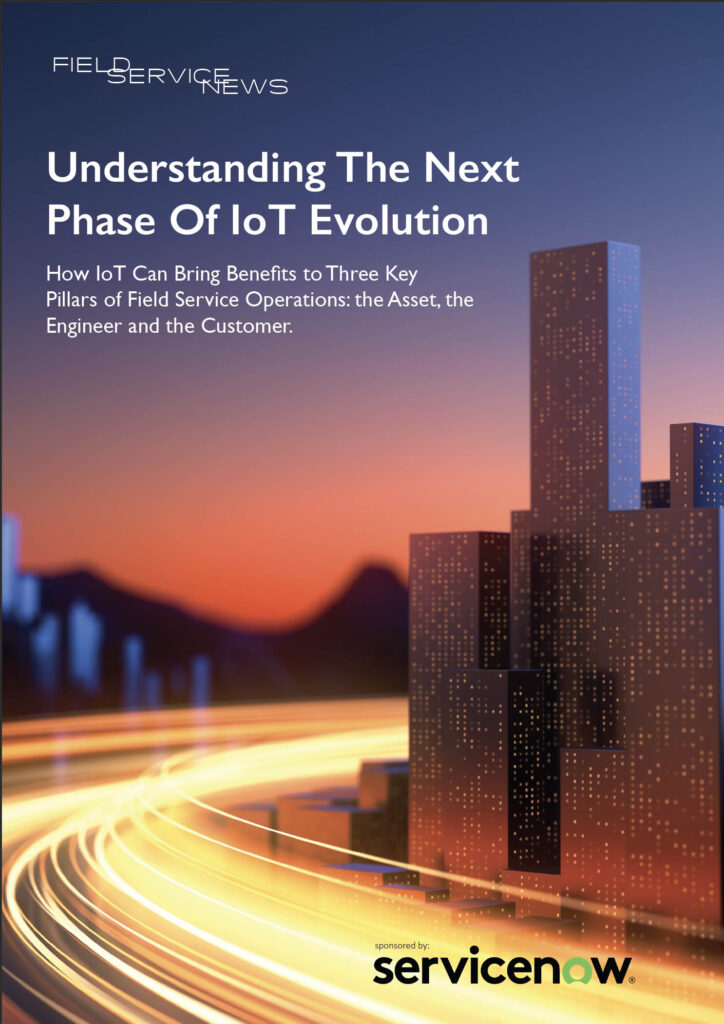Post Script: A few questions for reflection on how IoT could improve your service operations
In this series, we have put forward a simple example of an asset with just one data point to illustrate how IoT could impact asset management, workforce management and customer success planning for field service organizations.
Of course, each organization and each situation is unique, and there is no one size fits all approach to such a process.
With this in mind, we have outlined a few additional questions for you as a service leader to consider against each key point of the paper to help you begin to reflect on how the ideas put forward could relate to your own organization.
#1: IoT has become an increasingly important part of field service operations and is set to become the bedrock of service operations in the future. However, without actionable insight, asset data is of little value. What is required in your organization to turn IoT-fed asset data into meaningful and valuable actionable insight?
- Do you currently receive the right asset data into the systems where it can bring value?
- What is the asset data that can yield the most valuable insights to your organization and to your customers?
- Do you need to upgrade legacy assets to include connectivity? What would this cost? What assets would take priority?
- Which processes within the service cycle could be automated if triggered by an appropriate data feed?
- Could a self-service approach be applicable in any area of your service portfolio? If not, why? If yes, what is required to make this happen?
#2: It is often said that the most valuable resource of any field service company is its field workforce. Can the adoption of more sophisticated IoT-led service approach lead to better talent acquisition and retention?
- What does an average working day look like for your field service engineers and technicians? Do they have a good work/life balance?
- How does the shift towards proactive maintenance that IoT can facilitate impact their working day?
- Is the adoption of remote service something that would allow you to hold onto more experienced field workers for longer?
- Would the skill sets of your engineers or technicians be different if you adopted an IoT-led approach to service delivery? Would this be a positive or negative impact on your operation?
- Would an advanced approach to technology adoption make your organization a more attractive prospect for potential future recruits?
#3: Customer success has replaced customer satisfaction. It is now imperative that we work as partners to our customers to drive towards success together. Such an approach often requires more advanced layers of service thinking with IoT underpinning many such strategies.
- Is there an appetite amongst your customer base for a more sophisticated type of service offering such as a servitized or outcome-based model?
- Can you achieve success with such a model without adopting IoT?
- Are you able to drive transparency and trust in your customer relationships by open sharing of data? Does this apply to all data, or just some?
- How much would your customer base value data-driven insights and advice that can allow them to increase the productivity of their assets?
- Who would be an ideal customer/group of customers that would be prepared to be part of such a new initiative?
Want to know more? Field Service News subscribers can access the full white paper ‘Understanding The Next Phase Of IoT Evolution’ on the button at the top of this article.
This white paper is sponsored by ServiceNow

![]() Data usage note: By accessing this content you consent to the contact details submitted when you registered as a subscriber to fieldservicenews.com to be shared with the listed sponsor of this premium content ServiceNow who may contact you for legitimate business reasons to discuss the content of this white paper.
Data usage note: By accessing this content you consent to the contact details submitted when you registered as a subscriber to fieldservicenews.com to be shared with the listed sponsor of this premium content ServiceNow who may contact you for legitimate business reasons to discuss the content of this white paper.


